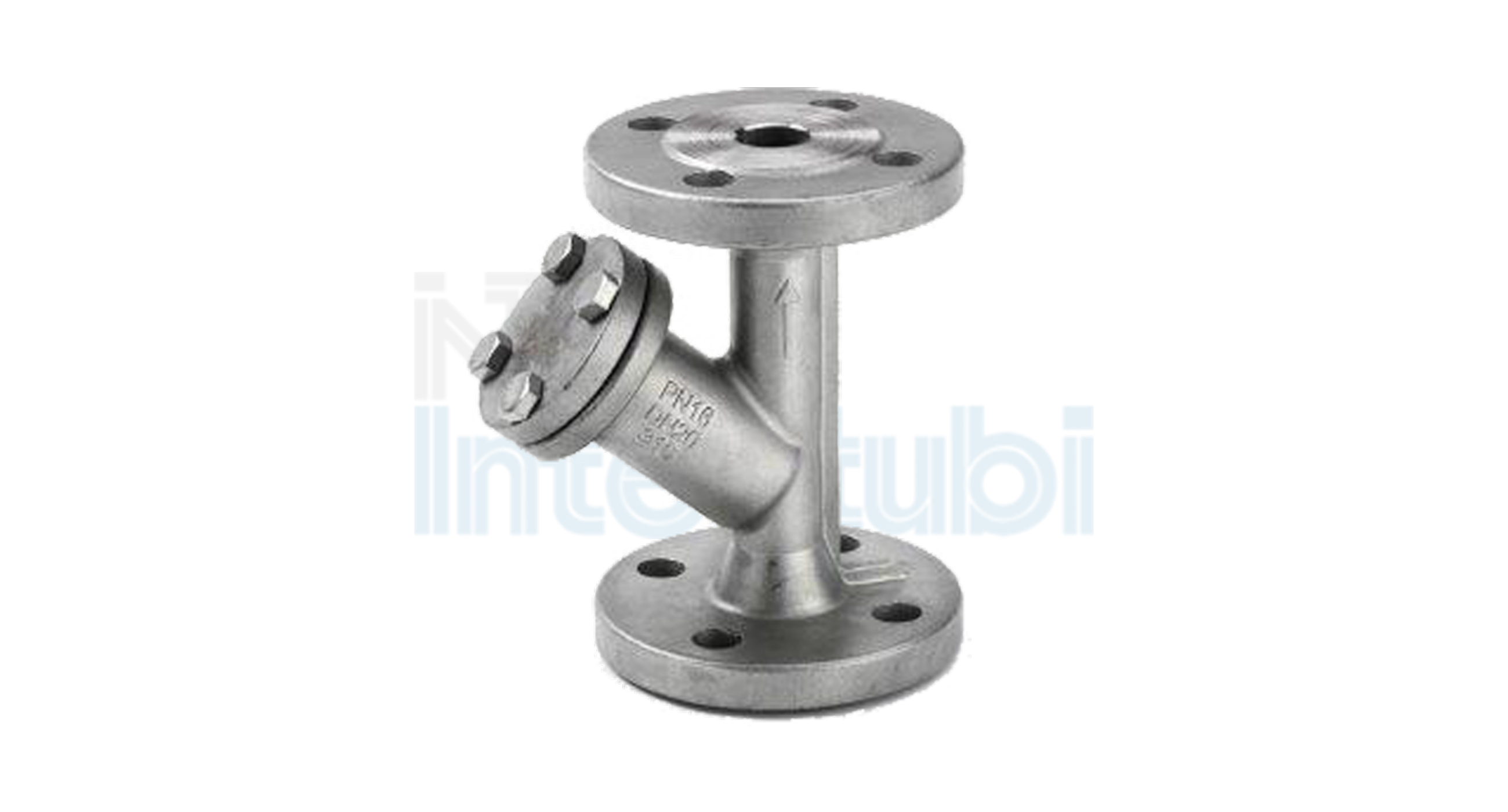Y filters are important components within a hydraulic system and are easily recognizable thanks to their characteristic "Y" shape from which the name derives. Their role is, as the name itself implies, to filter the fluid present inside a system in order to eliminate impurities, fragments and other solid elements that may be encountered. In particular, the denser the filter mesh, the smaller the particles and dust that can be captured by it and, therefore, the better the cleaning of the fluid.
The principle of operation of the Y filter
Generally, the liquid enters from the end furthest from the filter and, before proceeding on its way to the next pipe, is forced to cross the mesh and be filtered. Gravity is at the heart of how the Y filter works. In fact, when assembling these components, it must be taken into account that the derivation characterized by the filter must be positioned at the bottom so that what is filtered is deposited on the bottom and does not subsequently re-enter the circulation, inhibiting the operation of the filter itself.
An important aspect to consider is the replacement and cleaning of the filter. To do this, it is necessary that there are devices for interrupting the flow towards the filter area such as, for example, the gate valves: in fact, these components allow maintenance without emptying the system. Otherwise, it is also possible to build systems with bypasses to be used every time the filter is subjected to such cleaning operations.
The components of the Y filter
The components of a Y filter are few, but necessary for its correct functioning:
- Body: it is the supporting structure of the filter. It is made of stainless steel and the finish is guaranteed by sandblasting and pickling operations.
- Lid: closes the derivation of the filter and is necessary to facilitate the insertion and replacement of the latter. It is made of stainless steel as well and is subjected to the same surface operations.
- Gasket;
- Filter: it is the fundamental element of the component that also gives it its name.
- Screws: needed to close the lid.
- Cap: required to close the filter at the lid.
Technical and operating characteristics of the Y filters
In the Intertubi catalog there are two different models of Y filters. The main distinction is given by the type of connection with the rest of the system: in fact, the first model is flanged (according to DIN 2501 PN16) while the second model is threaded (according to EN 10226-1). Other differences can be found by comparing the pressure drop diagrams in relation to the flow rate of fluid inside the filter. The maximum and minimum temperatures are the same, which means that operation is guaranteed between -30 ° C and 240 ° C. The maximum operating pressure for the first model is 16 bar, while the maximum pressure for the second model is 40 bar.
The importance of the maintenance of Y filters
Maintenance represents a fundamental phase in the life of any mechanical component even if, unfortunately, it is usually little considered and is often neglected, leading to consequences of even considerable importance that can cause significant damage to buildings, machinery and persons. Establishing an ordinary maintenance plan, in addition to any extraordinary interventions, allows you to extend the useful life of any component and, among these, also of the Y filters.
In fact, the Y filters play a central role within the systems because they allow the elimination of particles and impurities that are present within the fluid. The meshes present for the filter are typically 400-500 micrometers in size: denser meshes can be inefficient because they are more sensitive to clogging and causing ever greater pressure drops. It is precisely in this context that the importance of carrying out targeted and continuous maintenance over time emerges: the replacement and cleaning of the filters allows to maintain a great filtering power by limiting the degradation effects that can involve both the Y filter itself and all the components of the circuit downstream from it.
How to evaluate when to carry out cleaning operations? Going to evaluate the pressure losses during the passage through the use of a pressure gauge that evaluates the flow pressure of the water at the inlet and outlet of the filter.
